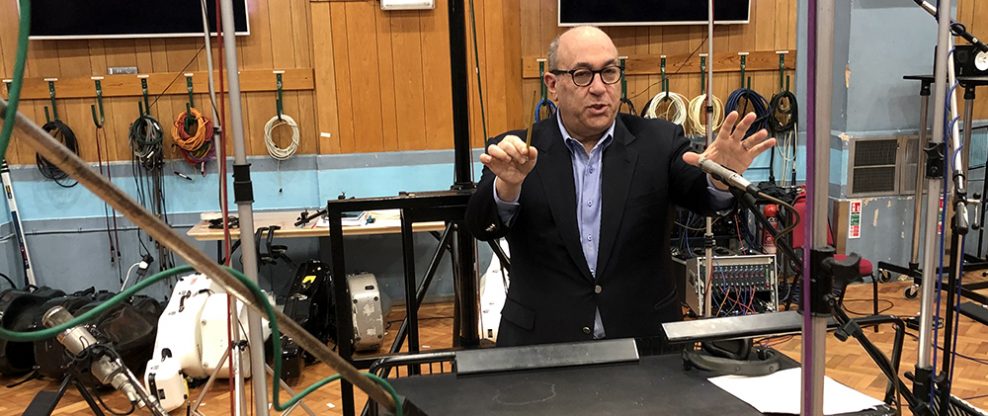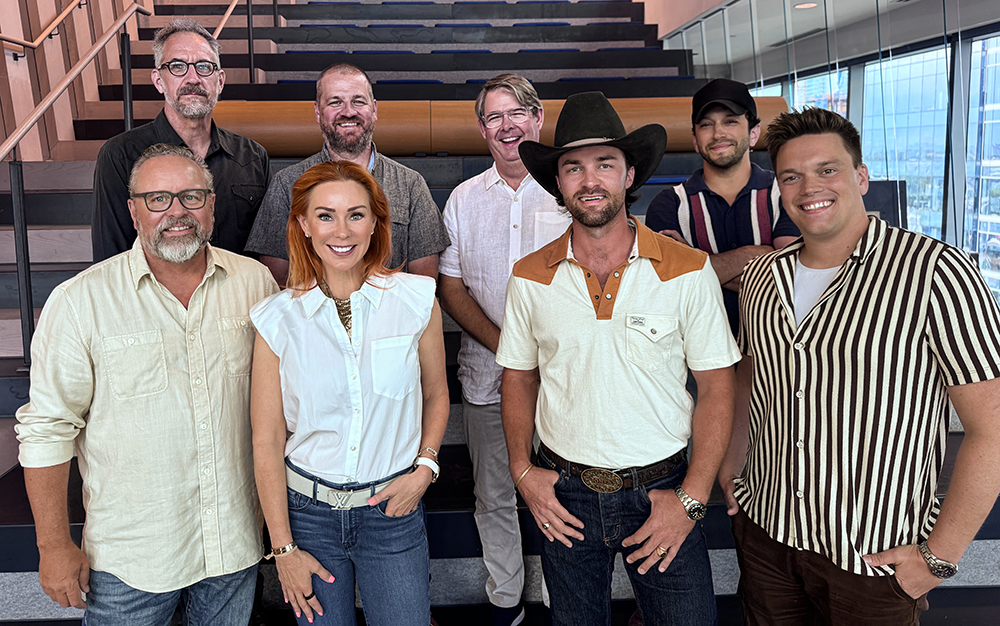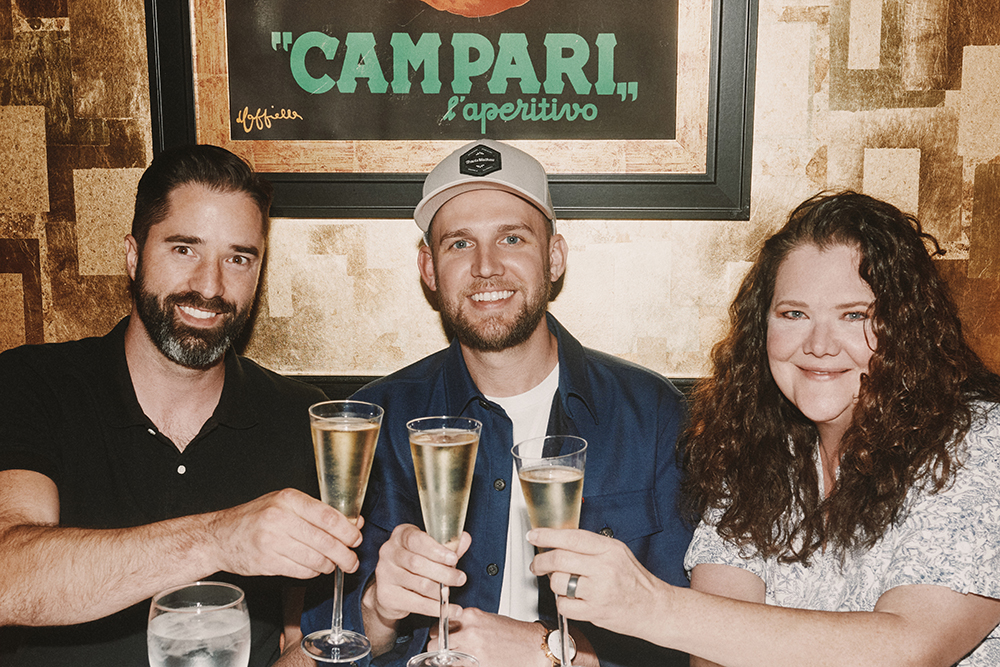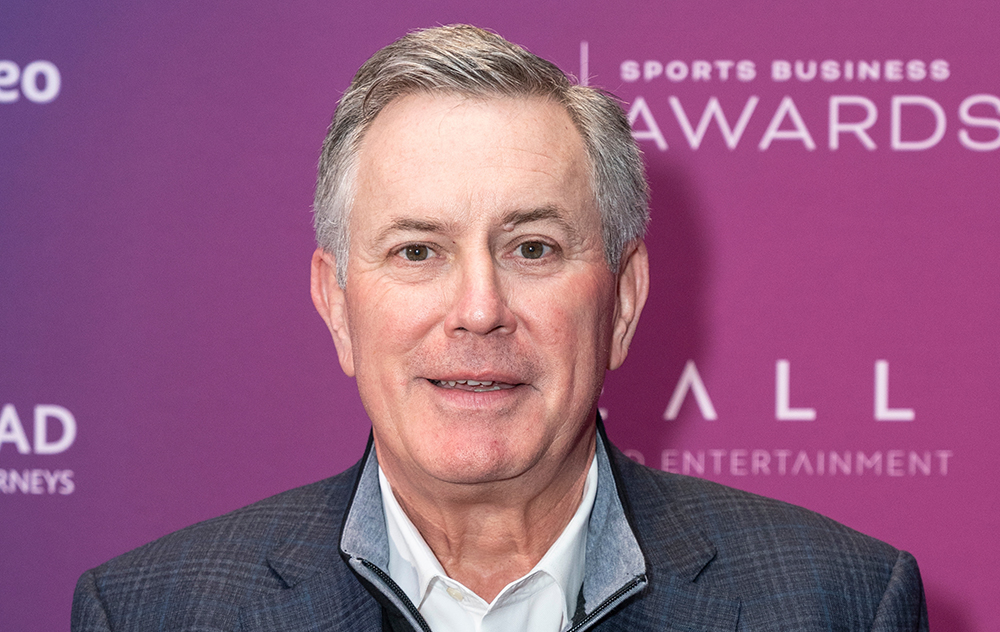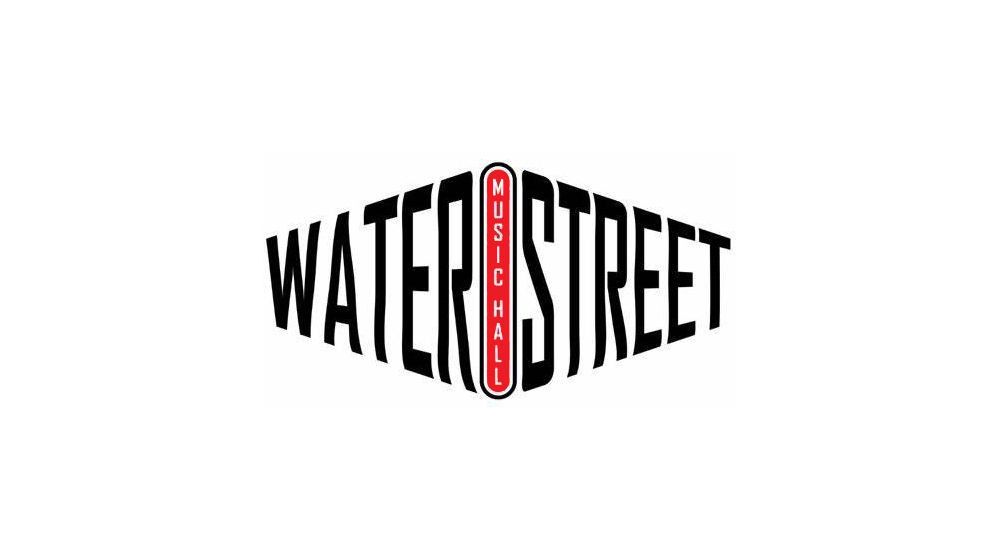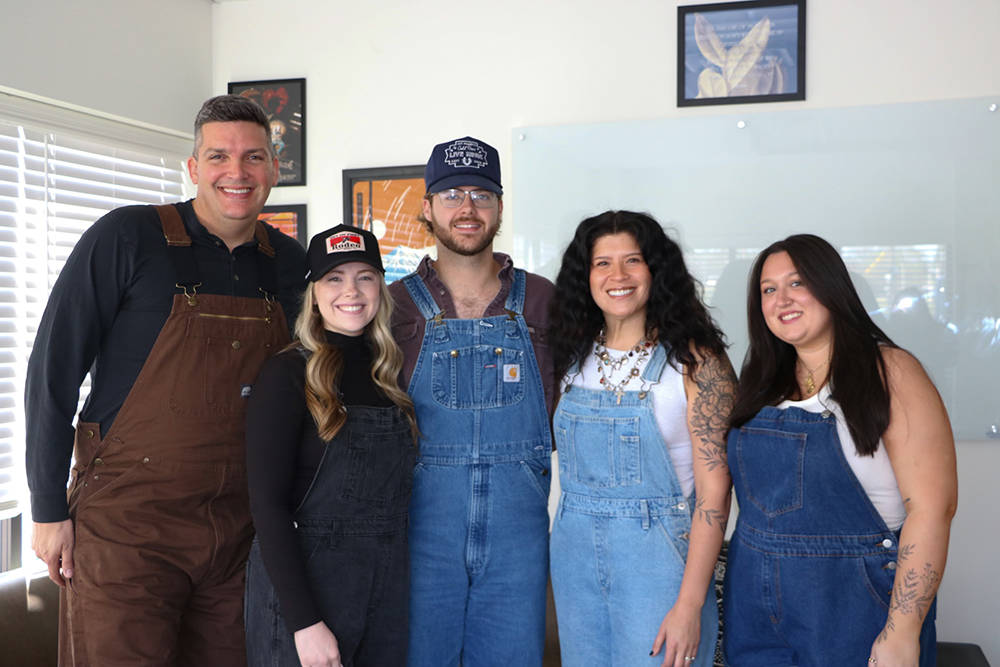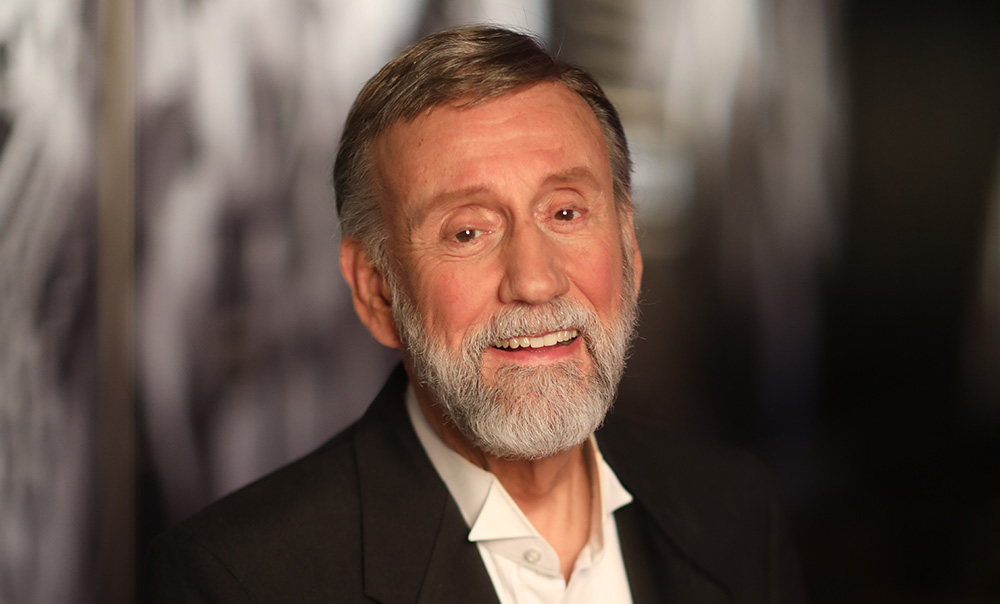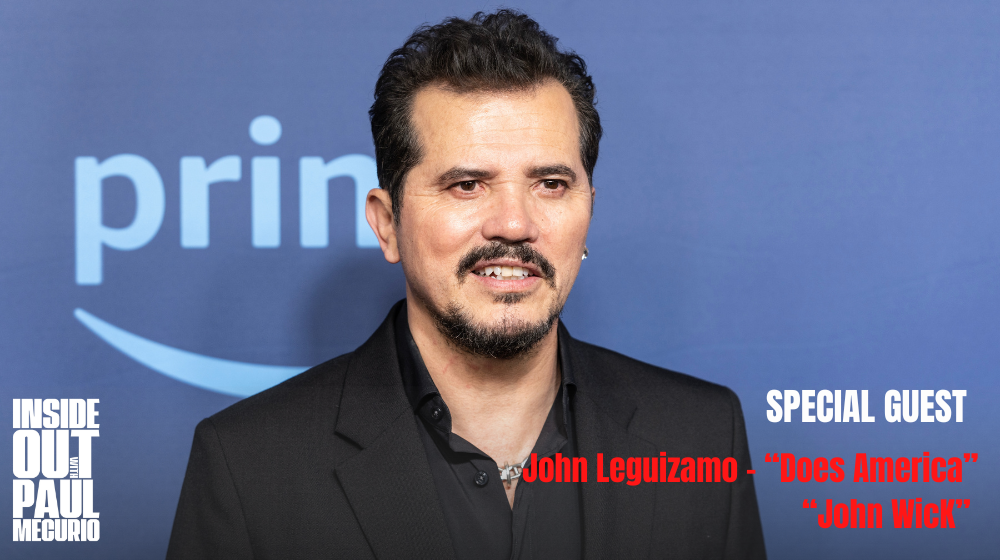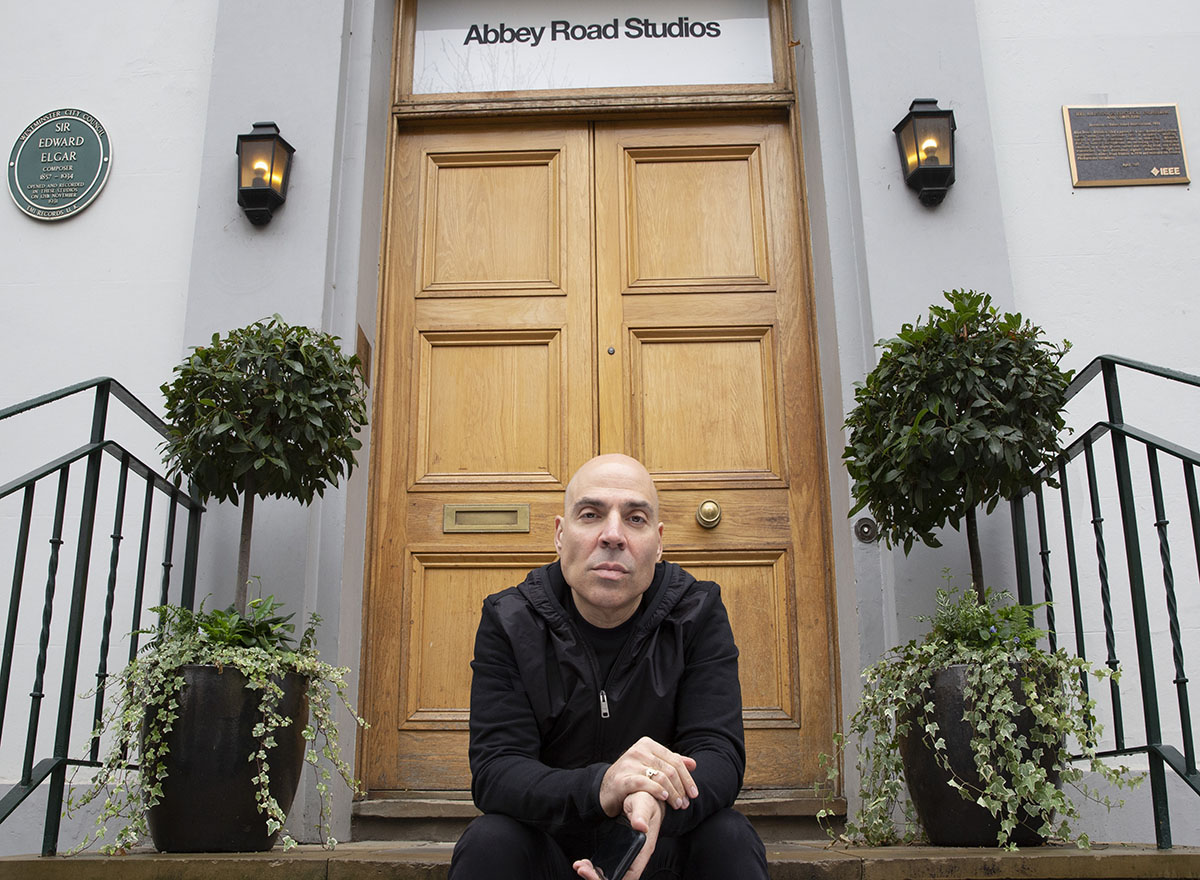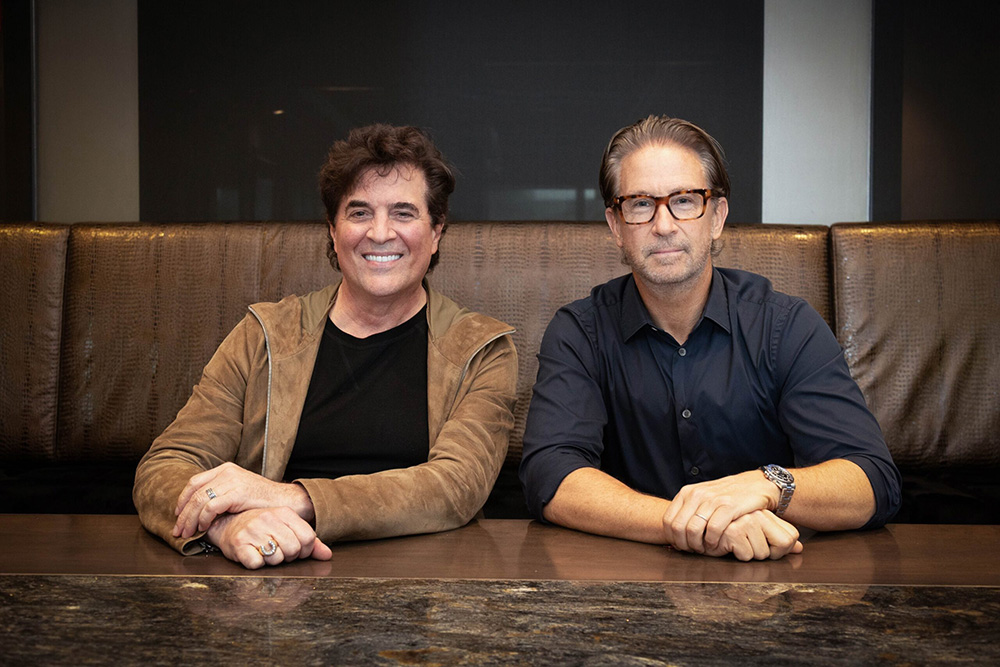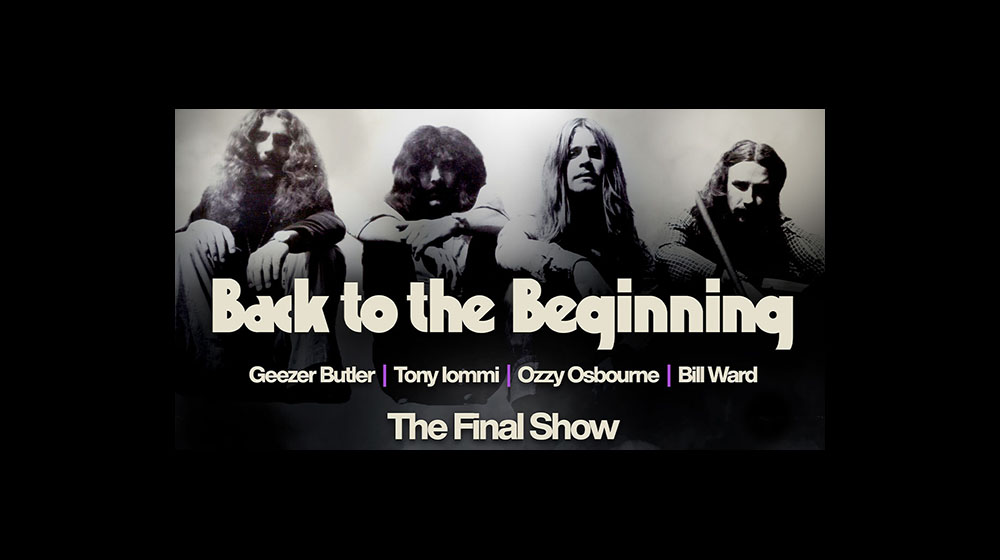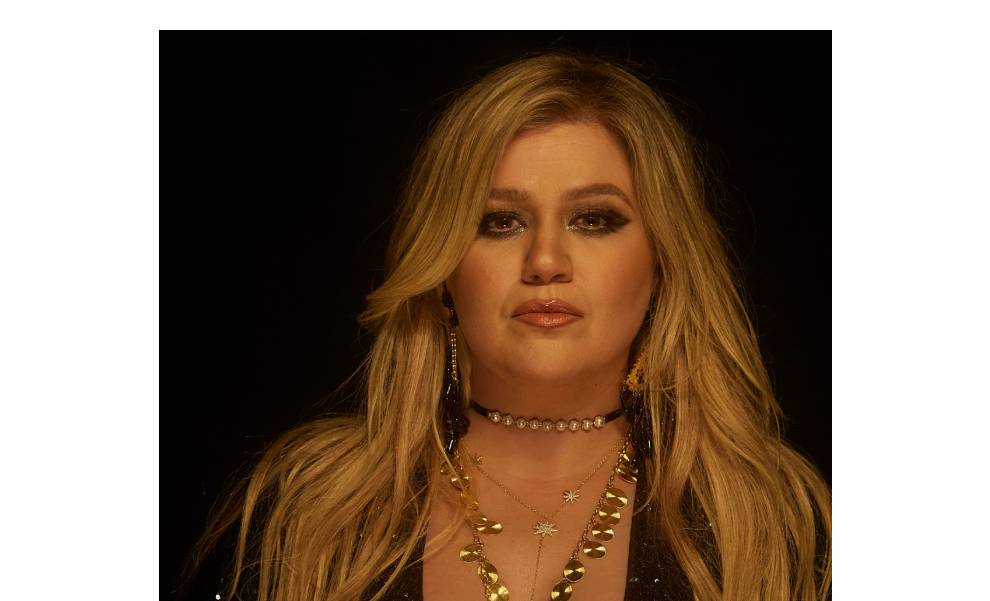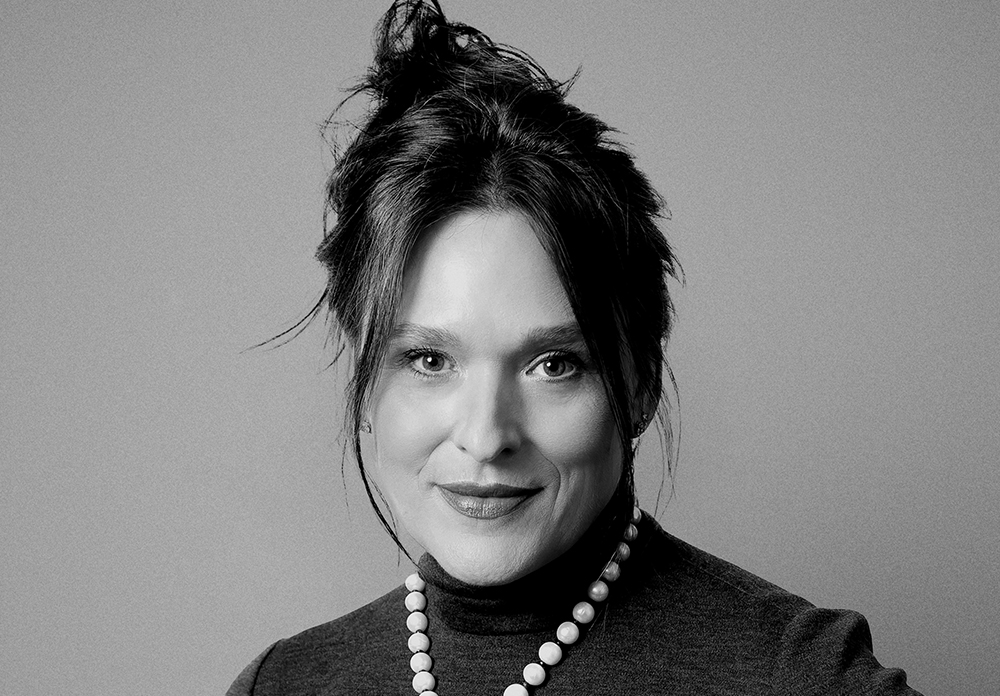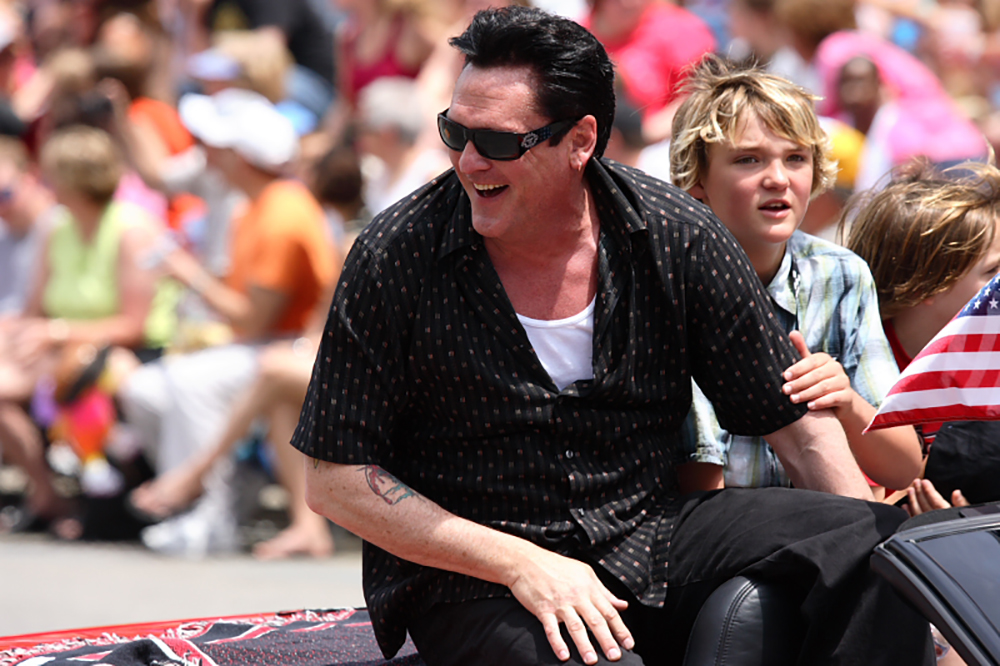This week In the Hot Seat with Larry LeBlanc: Jay Landers, independent A&R executive.
Jay Landers may well be the music industry’s equivalent of Corporal Walter Eugene “Radar” O’Reilly, as played by Gary Burghoff in “M*A*S*H,” the American war comedy-drama series that aired on CBS-TV for over a decade.
As one of the most versatile music industry figures of our time—being an independent A&R executive, music publisher, producer, and songwriter, Landers like “Radar” O’Reilly is a fast runner, always a step or two, or even three steps ahead of any others in serving client requirements.
He has held lead A&R positions or has been a consultant at Columbia Records, The Entertainment Company, EMI Records Group, Walt Disney Records, and Universal Music Group.
Landers gets the big picture of being part of a project without losing focus of who is in charge while being able to artistically work across practically every music genre with meticulous music recall that few can match.
He not only champions his clients, but his expertise has resulted again and again in labels, publishers, managers, and artists seeking him out, and he has as a result, played a significant role in developing the catalogs of such artists as Josh Groban, Hilary Duff, Neil Diamond, James Taylor, Céline Dion, Peabo Bryson, Bette Midler, Johnny Mathis, and many, many others.
No question Landers’ most visible work has been as Barbra Streisand’s trusted A&R executive for nearly three decades; being the executive producer of 30 Streisand albums, and music supervisor for her live concert performances and affiliated releases.
He has also contributed to numerous Broadway cast albums, as well as such film soundtracks as “The Princess Diaries,” “Finding Nemo,” “Beauty And The Beast,” “The Lizzie McGuire Movie,” and “Aladdin.”
You have been both a label executive, and a record company consultant. You are a producer, a songwriter, and a music publisher. Is it safe to say that you are an independent A&R executive?
Yes.
While there are at least a thousand music supervisors today, mostly working on films and TV shows, I can’t think of another that quite does what you do across so many sectors of entertainment.
Well, I don’t know. I honestly don’t know if they are doing it. I am sort of in my own little bubble. I don’t know. There must be A&R people who work in this area.
Perhaps there are, but they are likely not juggling multiple projects in different mediums, simultaneously. How many projects do you usually juggle?
I am generally working on three at a time. Finishing one, starting one, and conceiving one. It generally works out in a random sense to be exactly that. About three projects going on simultaneously at various stages.
How many Barbra Streisand albums have you been the executive producer of?
Barbra’s next album to be released this year will be my 31st project with her.
Barbra is the only artist in popular music history to have #1 albums in six consecutive decades. That’s a feat unlikely to be ever broken.
Yes.
You were recently in Nashville.
Fred (Mollin) and I co-produced a new Christmas album for Kristin Chenoweth, the Broadway star. I co-wrote three of the songs that she recorded. Since you knew my dad (music industry veteran Hal Landers) briefly, I’ll tell you that he often told me, “Don’t be limited to the job description on your business card.” This was in the day when people carried business cards. He said, “Your job is to do everything. So bring the project home.” It means do whatever it takes from finding the song to producing it. Whatever it takes. Just do it.
You and Barry Gibb are co-executive producers of his album “Greenfields: The Gibb Brothers Songbook, Vol. 1,” recorded in 2019 at the legendary RCA Studio B on Music Row in Nashville. The album features duets with Barry and Dolly Parton, Keith Urban, Jason Isbell, Brandi Carlile, Alison Krauss, Sheryl Crow, Olivia Newton-John as well as with Miranda Lambert and Jay Buchanan, and with David Rawlings and Gillian Welch. The album was released Jan. 8, 2021, a month after HBO’s acclaimed documentary, “The Bee Gees: How Can You Mend a Broken Heart.”
We were in Nashville before Christmas (2019), and Barry was working with producer Dave Cobb, a super talented guy who basically works out of RCA Studio B. That was the most used studio in the good old days for the RCA artists. It was used to record hundreds of hits (including 200 recordings by Elvis Presley, as well as recordings by Chet Atkins, Willie Nelson, Roger Miller, the Everly Brothers, and Waylon Jennings). So Dolly (Parton) comes to the session with Barry Gibb, and she walks in and says, “My God, I haven’t been here in decades.” Then when she was standing at the microphone she said, “This is exactly where I stood when I recorded ‘Jolene,’ and ‘I Will Always Love You.’ It was like that was living history right there. That was exciting.
Nashville can be a difficult place for someone like you trying to pitch songs. Most of the label executives and producers there are music publishers too.
I love recording in Nashville, but I would never consider myself part of that insider community.
Music publishing has changed so much in recent years to a point where a circle of hit songwriters and hit producer/songwriters hold sway over many top-line artists. Also, there’s been the ongoing frenetic buying spree of publishing catalogs by the likes of the Hipgnosis Songs Fund, Primary Wave Music, Downtown Music Holdings, Round Hill Music, Shamrock Capital, Vine Alternative Investments, and others.
Well, it has changed so dramatically in that respect. Let me digress for one moment. The thing that I have found the most satisfying in my career—of course, in everybody’s career, there’s struggles; there’s success; and there’s failure. It’s not like it’s all been an easy road. But the thing that I find so satisfying is that I always thought of music in that there is good music, and bad music. I didn’t think that if you like rap, you can’t like rock. If you like rock, you can’t love Broadway or whatever. I always thought of good music and less good music.
While I was working with Hilary Duff and Miley Cyrus and those kind of kids at Disney, I was also working with Bette Midler, Barbra, Josh Groban, and Julio Iglesias, and whatever artists I was working with from the traditional world. To me, it is sort of the same task which is to find songs that sound like the truth coming out of this person’s mouth.
When it came to finding songs for Barbra on the last album she released, “Walls” (2018), I organized meetings at the three major publishing houses, Sony, Universal, and Warners. I would go up to the office, and they would have congregated 10 of their best writers, and I would give a very detailed seminar of what I was looking for. Very detailed. Each of these meetings ended with applause, with the writers coming up to me and saying, “Nobody has really ever articulated it (song requirements for an artist) so well. Thank you. We know what to aim for now,” etc.
How many songs came from those meetings?
With the exception of two writers that Evan Lamberg at Universal suggested, Carole Bayer Sager and Jonas Myron, not one other writer sent a single song. Not one writer, and not one publisher followed up with their writers to encourage them to write songs (for Barbra). Out of sheer necessity, I wound up co-writing the lyrics to 6 songs, including several with Barbra.
Maybe. they were intimated by Barbra’s stature.
No. It was, “We don’t write songs like that.”
Nobody is writing melodic songs anymore.
I understand. As a songwriter, they have to make a living, and they have to write songs that will appeal to today’s listeners.
It’s far easier for songwriters to build a percussion track, add loops, and overdubs vocals, and instrumental parts.
Not to denigrate that type of music. It was just that there wasn’t anything for Barbra.
How many songwriters today can come up with an original memorable melody?
Yes, and that is a greater challenge. That is why, when you ask me, do I go to publishers, I do but that is not where I find the majority of her songs.
Legendary music publisher, songwriting mentor, author, and speaker Judy Stakee wrote the wonderful 2015 book, “The Songwriter’s Survival Guide,” and her message is, “It all starts with a song.”
Whenever we were talking about a Broadway show, and somebody said, “You know, the sets were incredible,” Barbra’s manager, Marty Erlichman would say, “Yeah, well nobody is whistling the sets.” Meaning that you have to have a good song.
You’ve worked with artists who often are living in a bubbled world in which their management, record label, music publisher, road manager, whoever, may not always be telling them what the true picture is. Or they are scared to tell them.
Songwriter Jule Styne once said, “There is only one way to deal with Barbra Streisand: Tell her the truth. If you don’t tell her the truth, then you’re going to have a problem.” Early on in your relationship with her, Barbra was apparently struck by your candidness.
We were at a dinner with a number of her friends. I was not in this social circle, but I was at that dinner. Maybe 15 people were at the dinner. “Les Misérables” had come out recently (on Broadway), and the conversation turned to, “What did you think of that?” The way that she asked the question, one might have inferred that she loved it. So everybody was talking about that it was so great. She asked me. “What did you think of it?” I said, “I am probably swimming against the tide here but, while I loved some of the songs, I didn’t come out really loving the play. And I know it’s a giant success, and it’s hard to argue against success, but I didn’t love it.”
Many artists know it’s important to have someone telling them the truth about what they are working on.
My experience has been that they do want to know, but the truth or whatever you feel the truth is–your opinion–needs to be delivered in a constructive way. Not like, “That sucks.”
More, “We need to do this and this to correct this?”
Yes, that’s right. Marty told me a great story about Barbra. She was a neophyte film actress working on her first film “Funny Girl” (1968). She had done the play so many times on Broadway that she had strong opinions about it, even not knowing about things like camera angles, and so on. Certainly, William Wyler was one of the great film directors of all time and, particularly, a great director for women.
In fact, Wyler had directed “Roman Holiday” (1953) which won three Academy Awards, including the Best Actress award for Audrey Hepburn who he had chosen despite her relative obscurity at that time.
She would say to William Wyler, “What about this idea? Why don’t we do this?” And rather than resist her ideas, he encouraged her ideas which was very unique for a completely untested actress. Then, if he disagreed with her, he would say, “Why don’t we shoot one my way, and one your way, and then we will compare?” That was the easiest, and the smartest thing to say. Maybe her way would turn out to be better. He wasn’t resistant to hearing her out. It wasn’t about ego. It was about, “Let’s make the best movie that we can.”
(“Funny Girl” was the highest-grossing film of 1968 in the United States, and received 8 Academy Award nominations, with Streisand winning for Best Actress for her performance, tying with Katharine Hepburn (for “The Lion in Winter.”)
So I have taken that as kind of my mantra which is that if sometimes she doesn’t like a song that I suggested she sing, I’ll say, “Let’s try it. If it turns out terrible, I was wrong. If it turns out great, you made it great.” That is how we have always worked. I don’t think in 30 years we have ever had a harsh word with each other.
At a very young age, you were around Frank Sinatra, Johnny Cash, and other well-known artists, and you came to recognize that, while these were famous celebrities, these were also exceptional people.
What you have witnessed over 30 years working with Barbra, having been in her rehearsals, her recording sessions, and on her tours—no doubt which will be found in your so far unpublished book, “Driving Under The Influence Of Barbra Streisand”—is her immersive style of creativity.
You have also been steps away viewing other top artists like Madonna, Sting, Julio Iglesias, David Foster, Céline Dion, Neil Diamond, and Josh Groban.
That is what your entire career has been like.
That access to a front row seat must be very intoxicating.
Well, I’ve been very, very blessed. I don’t think of them (artists) as ordinary people. I think of them as extraordinary people. They have to, of course, put one shoe on at a time like everybody, but they are extraordinary people, and I give them a lot of allowance for whatever kind of idiosyncratic behavior might appear at unexpected times. I don’t know why, but I can’t think of a single argument that I’ve ever gotten into with any artist. It’s always about collaboration.
The first project you worked directly with Barbra on was the 1989 compilation release, “A Collection…Greatest Hits and More.”
You had met her earlier through Charles Koppelman who was her executive producer. You were an independent music publisher, and Charles asked you to find material for her “Memories’” compilation (1981), and you brought in a couple of songs.
Over time, Barbra recorded further songs you either published or found for her.
For “A Collection…Greatest Hits and More,” you brought in “Someone That I Used to Love,”co-written by Michael Masser and Gerry Goffin, and “We’re Not Making Love Anymore,” co-written by Michael Bolton and Diane Warren.
I did. Michael Masser was riding very high at that point with Whitney Houston, (including with “Greatest Love of All,” “Didn’t We Almost Have It All,” and “I’m Your Baby Tonight”), and he had written some fantastic songs for Diana Ross (including “Touch Me in the Morning,” and “Do You Know Where You’re Going To (Theme From Mahogany). I got to know him, and I brought him in.
At the time, Barbra was planning out the 1991 film adaptation of Pat Conroy’s 1986 novel “The Prince of Tides” which she directed the next year.
It’s all a blur to me. Was that at the same time? Did that album come out at the same time as she was directing “Prince of Tides?” I don’t remember it that way, and I have very specific memories about each of her albums.
Memories don’t blur together over time?
No, they don’t. I’m going to look that up. Dammit, you are right. No, “The Prince of Tides” was 1991.
Yes, but she started planning it in 1989, and filming was throughout 1990. Barbra began devoting most of her time towards directing “The Prince of Tides” in 1989. Principal photography for “The Prince of Tides” began in June 1990 in Beaufort, South Carolina. The film wrapped production in New York in September 1990. Due to her tight schedule, and limited availability, Columbia Records had approached her on releasing another greatest hits—her third being “A Collection…Greatest Hits and More,” released on Oct. 3, 1989.
I don’t recall that being the case
The first album you A&Red for Barbra was “Back To Broadway” in 1993. It was her second collection of songs from Broadway musicals following “The Broadway Album.” In 1985.
“Back To Broadway” was my first full album with her. I had earlier helped her put together other hits.
Today, Barbra considers herself an actress first. Though she never had music lessons, she studied with the renowned acting teacher Allan Miller while a teenager and absorbed the Method approach taught at New York’s Actors Studio. By the time, you met her, she was most certainly a megastar who would go on to further break entertainment barriers.
No question. Today, she’s a director, a songwriter, a philanthropist, and a recording artist. She’s always has a million things going on.
At different times in your career, you worked for veteran music man Charles Koppelman including at CBS Records, The Entertainment Company, and EMI Records Group.
Yes. I got a job working for Charles.
How did that come about?
I will tell you the story of how I met Charles. Early in my career, I was really tenacious in meeting people who didn’t know me, and I didn’t know them, of course. I started to think of how to get songs to Streisand and Dolly Parton, and different artists with recordings that Charles Koppelman’s name was on. It was like this guy seemed to be executive producing every artist that doesn’t write their own songs. How do I get to him? Charles used to stay at the Beverly Hills Hotel. I knew that from my father Hal. I called Charles’ room, he answered, and I explained who I was. And he said, “Diana Ross happens to be coming to my bungalow tonight to listen to songs for her new album which I am executive producing.” He had just finished working on “Endless Love” with her. The duet with Lionel Ritchie. So this could be a big album because she had just had this #1 record.
So I put together a cassette of five songs. Two of which I published, and three that I didn’t publish, but I thought she would sound good singing. I sent him the cassette, and he called me back later that evening, and he said, “I’ve got to tell you something. I played Diana a countless number of songs. The only songs that she liked were the five on your cassette. Why don’t we meet tomorrow?” So I met him, him, and Diana recorded three of those songs, and he said, “You can be my eyes and ears on the West Coast looking for songs, and different opportunities.”
Charles didn’t have an operation and office in Los Angeles in that period?
No. There was no operation on the West Coast.
For decades within American music publishing there was a sharp divide between New York and Los Angeles. New York, entrenched in Tin Pan Alley and the Brill Building, was centered on serving Broadway and seeking pop covers; L.A. hipsters, enjoying Southern California’s sun-drenched lifestyle, focused on both the music industry and film and TV opportunities. The publishing business was a little looser in L.A.
I suppose that was true, but Charles didn’t have anybody out there. A lot of his artists, like Diana and Barbra, were living in L.A., but he didn’t have anyone on the ground here. So he gave me a job for something like $100 a week, and I would find songs for his artists. If the publishing was available, I would split the publishing with him. So we started hitting a hot streak
While working at The Entertainment Company, you helped A&R the popular NBC-TV “Fame” show, working closely with Charles and music supervisor Maureen Crowe. You also signed songwriter Peter Kingsbery who formed Cock Robin which, signed to Columbia, were successful in Europe. Acting also as the group’s manager, you traveled with them extensively for two years on the road.
Together, you and Charles had hits with Barbra and Diana, and with Smokey Robinson, Stephanie Mills, and Angela Bofill, all in the same few months.
As a result, our relationship formalized a bit more, and suddenly I was working for Charles with a real salary. Along the way, he said, “You need to find some songs for Barbra because I am going to be making a record with her.” I had never met Barbra, but I found some songs.
This was for the “Memories” compilation album released in 1981?
Yes. I found her the song “Memory” from “Cats.”
Also, you brought in “Comin’ In and Out of Your Life” which Bobby Whiteside had sent you on behalf of singer Richard Parker. Parker later said “Koppelman was so knocked out by it that he sent a limousine for (Streisand boyfriend and manager) Jon Peters. Ten days later Barbra recorded our song in London. It all happened so fast.”
Yes, “Comin’ In and Out of Your Life,” and I was the publisher. You know Bobby Whiteside just died. That was the start of my publishing career for real where I was getting cuts, and I was experiencing my indoctrination into the music business via Charles who was fantastic to me.
(Charles Koppelman, through Koppelman/Rubin Associates, had signed the Lovin’ Spoonful in 1965. Later at CBS Records in various positions, he signed Billy Joel, Dave Mason, Janis Ian, Journey, and Phoebe Snow. In 1975, he formed The Entertainment Company which independently administered and promoted song catalogs, and produced music artists like Barbra Streisand, Dolly Parton, Diana Ross, and Cher.
By 1981, the Entertainment Company had grown into a production powerhouse with its own staff of producers, and 20 in-house songwriters. In 1984, Koppelman purchased the Combine Music catalog of 25,000 country songs.
In 1986, Koppelman and others formed SBK Entertainment World, Inc. in order to buy the 250,000 titles owned by CBS Songs. SBK played a major role in the careers of such artists as Michael Bolton, New Kids on the Block, Icehouse, Al B. Sure!, and Eric B. & Rakim. Next came SBK Records with Technotronic, Jesus Jones, Wilson Phillips, and Vanilla Ice, among others.)
Charles is renowned for matching up artists with hits. It was on his advice that Dolly Parton recorded “Here You Come Again” in 1977. He matched up Barbra Streisand and Barry Gibb on “Guilty” in 1980; and he hooked up Diana Ross and Lionel Richie, as you said, on “Endless Love” the following year.
I gave (producer) Gary Klein “Here You Come Again” because my father was managing Barry Mann (who wrote the song with his wife Cynthia Weil). And I was like a song plugger working for my father.
(“Here You Come Again” is a rare example of a Dolly Parton hit that she did not write herself. Barry Mann and Cynthia Weil composed the song in 1975 as a potential comeback hit for singer Brenda Lee, but she decided not to record it.
Charles deserves to be placed alongside such gifted and admired American music executives as Goddard Lieberson, Mitch Miller, John Hammond, Ahmet Ertegun, Jerry Wexler, Jerry Greenberg, Bob Thiele, Norman Granz, Sam Phillips, Ralph Bass, Bert Berns, Seymour Stein, Jac Holzman, Bob Krasnow, Chuck Kaye, Marty Bandier, and Clive Davis who each contributed to our music culture.
Charles was brilliant. He is brilliant. He had an uncanny ability to match the right people, and find them the right songs. He just had that talent. He really had a great ear for that, and then he was very shrewd as a businessman in a good way. And he was, and is incredibly charming. So the artists felt comfortable with his guidance. He came into this world of being the executive producer in an interesting way. At a certain point, the record labels shifted their A&R focus from making records with their artists to being talent scouts. So there wasn’t anybody at Columbia Records in those days who could find the songs, and say “You should work with this producer,” and help make the record. So Charles said, “There’s an opening for me to be an independent A&R person, but I am going to call myself executive producer.” Then he would publish the songs of the artists that he was working with. He kind of changed the landscape of A&R, and I walked right through that door with his encouragement. I met Barbra when he was pitching her with one of the songs that I had given him. So I got to meet her. Charles’ bridge to Barbra was through her then-boyfriend Jon Peters.
Barbra and Jon Peter had a personal and business relationship from 1973 to 1982.
Jon was a very volatile fellow, and when he and Barbra split suddenly, Barbra was harder to wrangle. For whatever reason—nothing dramatic— they (Barbra and Charles) just drifted apart. So when Jon Peters and Barbra split up, she rejoined with her original manager Marty Erlichman.
Marty has been so dedicated in nurturing and protecting Barbra’s artistry over five decades. While Jon Peters was acting as Barbra’s personal manager, Marty went off to work on other projects. However, he never lost touch with Barbra. Marty was back for “Yentl” (1983), and everything since.
There was a 10 year period when they weren’t together. They were always friendly, but he wasn’t formally her personal manager. So she reunited with Marty. And then she said to Marty, “There’s this guy that Charles introduced me to that found some pretty good songs for me. Track him down.” So Marty found me. At the time I was an employee of Columbia Records. We had lunch, and he asked me if I had the time, the interest, whatever, to work with Barbra. Of course I did. It was that simple thing that she happened to remember me.
(Marty Erlichman was instrumental in helping Barbra Streisand get her recording contract with Columbia Records. They met at the Bon Soir club in Greenwich Village in 1960. When Marty heard Barbra sing, he was transfixed. He arranged to see her backstage in her dressing room. “Dressing room?” he reminisced later. “That’s being polite. It was a small closet right off the kitchen. l told Barbra, right there and then, that she would go on to win every major award there was in this business. That’s how impressed l was.”)
I remember Marty managing the Clancy Brothers and Tommy Makem in the early 1960s.
Barbra can be tough as nails in standing up for what she believes in–with enormous integrity—but then there’s Marty working from behind the curtain.
He’s Barbra’s greatest defender. He has always been that. Obviously, he’s a shrewd business guy always fighting for her to have the correct deals but mostly whatever idea she came up with, he would say, “Let’s try it. Let’s do it, Let’s make it happen.”
He’s a facilitator.
He’s the ultimate facilitator for a creative artist who has many ideas. Marty has frequently said to me through the years that he was not a terribly experienced manager when he found Barbra. He had the Clancy Brothers and a couple of other acts. He was a newcomer, and she was a newcomer. He found her when she was working in a club, and she was also getting Broadway auditions. He immediately said to himself—he said that It came to him almost like an epiphany–that if she tries all of these things, movies, concerts, records, television specials, whatever it was, if all of them are succeeding at the same time, that’s the ultimate. But if the record sales slowed down, she is still a movie star. If the movies slow down, she’s still a record star. But keep something going all of the time
Even today that “always have something percolating” strategy is still paramount. For example, The Netflix documentary, “Barbra: The Music … The Mem’ries … The Magic!” in 2017 was bundled with touring, an album, and a DVD.
I was the music supervisor, and I co-wrote the script with her, and a friend of ours (Broadway producer and director) Richard Jay-Alexander.
After five years at Columbia Records as director, A&R & Soundtracks, and then VP of A&R, you reunited with Charles Koppelman by becoming senior VP of A&R at EMI Records. But you also continued working as executive producer for several Columbia artists, including Barbara, Julio Iglesias, and Neil Diamond.
In 2000, you became Sr. VP of A&R at Walt Disney Records, working across all entertainment areas, including TV soundtracks, teen music, kids music, and Broadway cast albums.
When I worked at Walt Disney Records, my sort of claim to fame there was that I was sort of the one who said, “Let’s turn the Disney Channel TV stars into pop stars. So I signed Hilary Duff. I didn’t discover her. She was discovered by the TV casting people, but I signed her as a recording artist, and then a dozen other kids happened after her.
Is it true that while you were at Walt Disney Records that you brought the songs “Beauty and the Beast,” and “A Whole New World” (from ”Aladdin”) to Barbra, and she passed?
That is true, yes. But the after effect of that was I was working with a friend of mine (Walt Disney Pictures President of Music) Chris Montan. Chris called me, and he said, “I am really up against it because I have offered this song ‘Beauty and the Beast,’ not just to Barbra but to every major artist that you can think of, male and female.” They had gone to George Michael, Michael Jackson, anybody who was popular at the time. They all passed. So I said to Chris, “I’m working with a guy who is cold as ice, but he’s a fantastic singer named Peabo Bryson. But, after Barbra, I don’t know anyone who could tackle that song.” He said, “What do we do?” So I was talking to a friend of mine, Paul Burger…..
Who was then president of Sony Music Canada.
Right. I called Paul Burger and asked if he had anybody in mind or someone that he was working with. He said, “Well, I’m working with this girl Céline Dion. You might think of her in some respects as the “French Canadian Barbra.” I said, “Well, that is the kind of voice that we need. Please send me some of her recordings.” Fast forward, I send her to Chris, and Chris said, “Look I got nobody at this moment. Let’s just go with it.” So she came to New York where we were recording.
The bed tracks were recorded first at The Record Plant in L.A., and Peabo and Céline recorded their vocals at The Power Station in New York over the Labor Day holiday weekend (in 1991).
The song became a big hit. And that kind of really put Céline on the map in the United States. She had a few singles before, including “Where Does My Heart Beat Now” the year before (which reached #4 on the Billboard Hot 100, and #2 on its Adult Contemporary chart.)
(Peabo Bryson and Céline Dion’s duet recording of “Beauty and the Beast,” peaked at #9 on the Billboard Hot 100; and at #3 on the Billboard Hot Adult Contemporary chart.
What was the first record you bought?
The very first record that I bought, not the first record that I had, was when my parents went to Europe, and they dropped me off with my relatives in Chicago when I was 10 years old. I went to the record store in Chicago, and I paid my own money for “Windy” by the Association (released in 1967). That was my first purchased record.
We both grew up with Top 40 radio in the ‘60s where there was a blending of adult contemporary, Broadway, soul, country and western, rock and pop.
Sure you could have the Beatles, the Rolling Stones, the Supremes, and the Singing Nun all on one station.
Do you know what record knocked the Beatles’ “A Hard Day’s Night” off the top of the Billboard Hot 100 chart in 1964?
Go ahead.
Dean Martin’s “Everybody Loves Somebody” which was then followed by “Where Did Our Love Go” by the Supremes, and then “House of the Rising Sun” by the Animals.
That was the environment that I grew up with too. Broadway, pop, rock, soul. Whatever was good somehow bubbled to the top, and I loved it all.
Did you attend college?
I barely went to college because I wrote a screenplay for a movie, and it got made, and I left college to pursue it.
What’s the name of the movie?
Oh. it is so awful that I don’t want to tell you.
You know I will find it.
It’s called “Just Tell Me You Love Me” (1978).
I somewhat remember the film. Teenage con artists fleecing tourists at Maui hotels starring Lisa Hartman and Robert Hegyes who played Juan Epstein in “Welcome Back, Kotter.” There was music by England Dan and John Ford Coley.
Your father Hal, and his partner Bobby Roberts, had a wide variety of entertainment operations that included motion picture production (Landers and Roberts Films), concert promotion (Artists Consultants), music publishing (L&R Music), and a label (Mums Music with a roster that included Albert Hammond, Jackson Sisters, and Band of Angels.
(In the 50s, Bobby Roberts had headlined a dance team called the Dunhills the name he was to borrow for the record company he and Lou Adler founded in 1966. Dunhill Records’ most notable acts were the Mamas and Papa, Steppenwolf, Jim Croce, and Three Dog Night).
Landers and Roberts Films had box office hits with “Death Wish”(1974) with Charles Bronson, and “Bank Shot” (1974) with George C. Scott.
Landers and Roberts Films produced one of my all-time favorite films, the 1972 comedy caper, “The Hot Rock” with a cast of Robert Redford, George Segal, Ron Leibman, Paul Sand, and Zero Mostel. The film was directed by Peter Yates from a screenplay by William Goldman. Most memorable was the jazz soundtrack produced by Quincy Jones featuring drummer Grady Tate, trumpeter Clark Terry, saxophonist Gerry Mulligan, as well as members of L.A.’s famed Wrecking Crew.
A seldom repeated, but absolutely true story, is that Quincy Jones was brought in as a last-minute replacement for Phil Spector to score the movie. I had found the book “The Hot Rock” at a public library. I thought it would make a great movie night. I gave it to my dad, and he signed Steve McQueen to star. At the 11th hour, McQueen dropped out, and Redford agreed to do the role. My understanding is that he never really loved the movie, but the salary enabled him to purchase (film rights to) “All The President’s Men,”
I know you worked for your father’s publishing company but you also worked part-time for “Soul Train” host Don Cornelius, and soul promoter Dick Griffey who together had established Soul Train Records in 1975.
On the surface, that looks out of your comfort zone.
That is not entirely accurate.
My father had a company that was a movie-producer, a record company, in concert promotion, a label, and a music publisher. The first company was called the Landers Roberts Company. One of the other companies that they had a deal with was with Don Cornelius who had Soul Train Records with Dick Griffey. Soul Train Records eventually became SOLAR Records, and then Dick bought out Don.
(SOLAR Records’ roster consisted of Shalamar, the Whispers, Dynasty, Lakeside, Midnight Star, Klymaxx, Calloway, Carrie Lucas, Collage, and the Deele.)
I was a kid coming to the office every day. In one corner there would be Cass Elliot (of the Mamas and Papas), and in another corner there would be Dick Griffey. It was a very heavy time and I was young enough to love it all, and not old enough to understand the demons that these people were dealing with. Whether it would be drugs or whatever it was.
The Landers Roberts Company merged with Artists Consultants Productions.
At the time, that was probably the biggest concert promoter in the world. It was run by Lou Robin. You could name any group on the planet at that time, and they promoted their concerts at some point or another. But the most consistent client was Johnny Cash. Johnny toured every day of the year, and Lou was as much as Johnny’s manager as he was his concert promoter because they were together all of the time. Lou Robin to this very day, however old he might be, is still the executor of the Johnny Cash Estate.
(Veteran concert promoter and artist manager Lou Robin founded Artist Consultants Productions in 1957 and was responsible for promoting more than 5,000 concerts worldwide with such major acts as the Kingston Trio, Simon & Garfunkel, Herb Alpert and the Tijuana Brass, Stevie Wonder, the Rolling Stones and the Beatles. Robin began promoting concerts with Johnny Cash in 1969 and, In addition to producing 100 Cash concerts a year, he became manager for both John and his wife June Carter from 1973 until their passing in 2003. He played a role in the licensing of Cash’s music, name, and likeness, merchandising, and a significant part in his recording career with Sony, Mercury, and American Recordings. Afterward, he served in the role of Manager of Business Affairs, and of Business Manager Emeritus of the Cash Trust.
Lou and Johnny were very very close.
Yes. As a result, my dad became very close with Johnny, and I knew him a bit too.
(After publishing this profile, it was announced that Lou Robin died on May 18th, 2021.
“It is with deep sadness and respect that we mark the passing of music industry legend, Lou Robin, at 90,” said the statement posted to Cash’s website. “Lou had an amazing 30-year run personally managing Johnny Cash and June Carter Cash from 1973 until their passing in 2003. The friendship and relationships he and his wife, Karen Wilder Robin, had with the whole Cash family were cherished. Our thoughts are with his sons, Michael and Steve Robin, and their families.”)
Your father had impeccable entertainment connections.
I tell you a great story. My dad was very friendly with Clive Davis (then president of Columbia Records). The first time I went to New York was when I was 13. My dad was already in New York. I flew there, and he picked me up at the airport, and he said, “We are going to have dinner with Clive,” Of course, I knew who Clive Davis was, but I had never met him. So we go to Greenwich Village where we meet Clive. And Clive is showing the sights, and he says, “You see that club, over there”—Gerde’s Folk City on West Fourth Street—“that’s where Bob Dylan got his start.” On cue, Bob Dylan walks across the street. Talk about somebody you don’t see every day. Bob Dylan walks across the street, and says, “Hi Clive.” “Clive says, “What a coincidence. We were just speaking of you. This is my friend Jay Landers.” And I shook his (Bob’s) hand, trembling. And that was that. Then we went for dinner and we were sitting in the restaurant. and in walks Ian Hunter, Bobby Colomby, and Jim Messina. I don’t know if they were together, but in they walked. And I got to meet all of them. I was like, “I have to be in this business.” This is the most fun thing. I didn’t think of it as a business. I just thought, “You come to New York and you get to meet these people.
Back home in L.A. a few years later as an independent music publisher, you spent a lot of time networking, hanging out in rock clubs like the Whisky a Go Go, The Starwood, Madame Wong’s, and The Troubadour, meeting other publishers, managers, attorneys, record producers, and label executives.
Yes, I was an independent music publisher. It wasn’t as lofty as it sounds. I had friends who were songwriters. I wasn’t really aware of the deep machinations of music publishing. In my mind, the main task was you’ve got a song, and you want to get it to an artist. So I had some friends that wrote songs, and I would try to pitch them to A&R people, and record producers. I would do anything that it took to meet these people. They were like Gods to me. I’m talking about Richard Perry and Peter Asher. Producers that used outside songs
I remind myself of a story now. I am a huge fan of David Foster. This was before he was a record producer. I would see his name on every record that I liked. He was either the piano player, the arranger, or did something, like being the songwriter. And I was a huge fan. And I couldn’t seem to meet him. But I did meet his sister Jaymes (Jaymes Foster-Levy) who he works closely with. Jaymes and I became friends, and I eventually hired Jaymes to work at my publishing company. Through that, I had more access to David. David is a certified musical genius. It doesn’t matter if he has songs on the chart this week or next week or last week, he’s a genius.
David Foster, as session player from 1975-1978, played on hundreds of recordings, including those by John Lennon, Bob Weir, Lynard Skynard, the Tubes, George Harrison, Neil Diamond, Barbra Streisand, Rod Stewart, and Paul Anka. Toward the end of the ‘70s, Foster segued into producing and writing. Among his early clients were Hall & Oates, Deniece Williams, Boz Scaggs, and the Average White Band. In 1979, he received his first Grammy for writing Earth, Wind & Fire’s “After the Love has Gone.”
David, I know every record that he has produced.
Over a four-decade career, David has been involved in creating some of the most memorable recordings of the contemporary pop era. Whether as a producer, songwriter, or both.
He has worked with such leading musical figures as Barbra Streisand, Madonna, Josh Groban, Céline Dion, Michael Bublé, the Corrs, Toni Braxton, Chicago, and the late Natalie Cole.
As a songwriter, he has penned such chart-topping hits as “After the Love Has Gone” for Earth, Wind & Fire, and “The Glory of Love” for Chicago.
He has also produced some of the most popular hits of our time including Céline Dion’s “The Power of Love.” and Whitney Houston’s “I Will Always Love You.”
You have had considerable access to David.
He has always been very open for some reason. He was very much okay with me sitting at his studio watching him produce people and create and mix tracks. One day, he was producing Céline. He started playing John Lennon’s “Imagine” that they were considering recording, and he looked up at me, and he said, “What do you think?” I said, “It’s pretty, but you aren’t playing the right melody.” He said, “What are you talking about?” I said, “David, I don’t play the piano. I can’t read music. I don’t know what note you aren’t playing, but I can only tell you that it’s not correct.” He says “Put on the (Lennon) record.” So I found the record, and we listened, and he said, “God damn it, you are right.” So he started asking me, “What about this way?” He’s asking me my opinion. And at that moment, I realized that even a genius needs somebody to tell them an honest opinion. They may not agree with it, but at least they think about it.
When you work on an artist’s greatest hits album I know you go through their catalog and check certain publishing sources. For other recording projects where you have to go deeper, do you also check the series of Joel Whitburn chart books; “The Great Song Thesaurus by Roger Lax & Frederick Smith; the “ASCAP Biographical Dictionary”; or “The Complete Book of The British Charts.” by Tony Brown, Jon Kutner, and Neil Warwick?
Well, I have all of those books, and I used to devour them. Then the internet came along and made the Lax book less urgent because you can just look up the song titles on the internet. I have a great collection of music-related books. I do look at them occasionally, but I’ve been a music fan for so long that my library is kind of in my head. What I do more as a hobby has turned out to be beneficial for my job is that I have an obsession with the original record labels, and the original record jackets, the covers. So if I download a Nat King Cole song into my computer, I would place the graphics that you can get on iTunes, and I put the correct label, and cover on it. I have probably 60,000 songs in my library, and they all have the exact single or album cover that they were originally released with. When I am thinking about an album that I want to find songs for I scroll through my online iTunes library, and I see these covers, and these labels and that triggers ideas.
YYou must check out Resonance Records’ 2019 Nat King Cole box set, “Hittin’ The Ramp: The Early Years (1936 – 1943),” encompassing the music of Cole‘s teens and early 20s. The 7 CD/10 LP set, produced in conjunction with the Nat King Cole Estate, and several private collectors, features elaborate packaging designed by John Sellards, including a ß-page booklet with historical label photos, and liner notes.
I’m working on a Nat King Cole project right now as matter of fact.
With Seth Berg who works with The Nat King Cole Estate?
Yes. I called Seth up and I said, “This is an idea which may appeal to you.” I was listening to Nat’s Christmas album (“The Magic of Christmas,” released in 1960, and reissued as “The Christmas Song” in 1963). It’s the only Christmas album that he made. He made a couple of isolated Christmas singles, but the album is the only Christmas album that he ever made. Half of the album was recorded in the ‘40s I think, and the balance was recorded in the late ‘50s or early ‘60s. The arrangements, with the exception of “The Christmas Song” (originally recorded in 1946, and re-recorded for the 1961 album, “The Nat King Cole Story”), which is an evergreen, the arrangements (arranged and conducted by Ralph Carmichael) are rather stodgy. The songs themselves, about half of them are great, and the other half are like singing “O Tannenbaum” in German or something like that. So nobody listens to those tracks. I told him that I would like to take the original vocals from all of the best of his Christmas songs, and take a couple standards that he’d recorded that could be arranged in a holiday Christmas way. That I wanted to rearrange the tracks, and keep the original vocals, and then turn some of these songs that are solo recordings into duets along the lines of Nat and Natalie.
Those Nat King Cole masters are owned by Capitol Records which has been quite conservative with its catalog offerings.
I got it away from the catalog division and pitched it as a frontline record at Capitol Records to be released this year. We are just about finished with it. I will probably write some liner notes.
You’ve written liner notes for over 150 albums including for Barbra, Johnny Mathis, and Bette Midler releases. Why the interest in liner notes?
There were a couple of liner note writers when I was a kid who I just knew their words.
My guess is that these would be Andy Wickham, Stan Cornyn for their work at Warner Bros., and the Beatles’ publicist Derek Taylor who also worked at Warner Bros., and freelanced.
Three of my heroes. I devoured those liner notes. When I got really going, liner notes had more or less become a thing of the past, except when they were on box set compilations. Then someone would write a small novel. I just enjoyed it. I particularily enjoyed Stan Cornyn who I got to know a little bit. He had this technique that he put you into the scene. He would say, “The ice cubes are clinking in Sinatra’s glass.”
Like “Frank Sinatra Has a Cold,” the profile of Frank Sinatra, written by Gay Talese for the April 1966 issue of Esquire which the magazine’s editors have declared as, “The Best Story Esquire Ever Published”.
That’s an article, but if you read…
I know. Both are examples of the New Journalism style.
Exactly. New Journalism style. So I tried to emulate that the best that I could. I wouldn’t say that I enjoy it because I’m not a natural writer who can just sit down and, like (New York magazine, New York Times essayist and liberal op-ed columnist) Frank Rich, write a brilliant analysis of a movie or play.
Nobody enjoys writing. They like having written.
Then I can tell you that if nobody is enjoying writing who is doing it that’s me.
(Stan Cornyn–executive VP of Warner Bros. Records; then to Senior VP of the Warner Music Group, and finally founder/CEO of Warner New Media—received a Grammy Award for Best Album Notes in 1966 for Frank Sinatra’s “Strangers in the Night,” and again the next year for “Sinatra at the Sands.”
His advertising and promotion campaigns helped raise the profiles of such Warner artists as Joni Mitchell, Alice Cooper, Black Sabbath, Fleetwood Mac, James Taylor, Randy Newman, and Van Morrison.)
Each of us in the industry tend to earmark songs that we figure are hits. Telling everyone, “Record this song.” With me, it was “Breakfast In Bed’ which Muscle Shoals’ songwriters Eddie Hinton and Donnie Fritts wrote for Dusty Springfield’s “Dusty In Memphis” album in 1969. Soon afterward it was recorded by Baby Washington, and then Jamaica’s Lorna Bennett who did a splendid reggae version in 1972. I kept pushing that song until UB40 (featuring Chrissie Hynde) did a version that reached #6 in the UK charts.
Do you carry songs around as well?
There’s a wonderful writer named Allan Rich who wrote the song (with Jud Friedman) “Run To You” for Whitney. A very good songwriter. He sent me a song (Lessons To Be Learned,” co-written with Dorothy Sea Gazeley, and Marsha Malamet) and I held onto this song for at least 9 years. Every once in awhile he would call and say, “Are you still interested in that song?” And I would say, “I really am. I am just waiting for the right opportunity. I finally found it, and Barbra recorded it (in 1997.) If it wasn’t 9 years, it was a long time.
Yes, I think of songs all of the time. All the time.
I just recorded a song with Kristin Chenoweth that I wrote 10 years ago. It’s a song I co-produced on her new album for Concord, titled, “The Stories That You Told.” My frequent collaborator Charlie Midnight and I co-wrote the lyrics, and (producer) Walter Afanasieff wrote the music.
Yeah, I find these songs, think about them. One of the challenges that I love is trying to find songs that can be recontextualized, Like “Sing” from “Sesame Street
Written by Joe Raposo as the show’s signature song, a version by the Carpenters reached #3 on the Billboard Hot 100 in 1973.
I recorded that as a Christmas song. I added some additional lyrics to Joe Raposo’s classic “Sing” for Kristin’s Christmas album released on Columbia Records in 2008. And I love doing that kind of thing.
Few are as knowledgeable about Christmas music than you. You have produced an abundance of seasonal music with such artists as Barbra, Manhattan Transfer, Barry Manilow, Kristin Chenoweth, and Peabo Bryson as well as overseeing the compilations “Capitol Christmas,” and “A Capitol Christmas Volume Two.”
You matched-up Barbra singing John Lennon’s Imagine” alongside “What A Wonderful World.” I also like the Johnny Mathis Christmas version first released on “Let It Be Me: Mathis in Nashville” in 2010.
“What A Wonderful World,” the Louis Armstrong hit, that song (written by Bob Thiele and George David Weiss) has now become a Christmas standard
see you listed as a public speaker only occasionally. Do you teach?
I’ve spoken at some classes, but I’m not a teacher.
You don’t do a lot of interviews either.
No, I don’t. It’s not about me it’s about the artist. I’m shy.
You are not shy.
I am shy.
You can’t be shy pitching songs.
Well, I’m an introverted extrovert. Or vice-versa.
Talk to me about that anxious moment when you are pitching a song, and you are sitting there with someone who will or will not agree that it’s suitable for the project or the artist. Meanwhile, they may be fiddling around with something on their desk or looking around, or even taking a phone call. That’s a long walk, isn’t it?
(Laughing) That is something that one can never truly be sanguine with, but I’ve experienced it many times. Eventually, you get a thick enough skin, and you get enough confidence to believe that what you have tried to give birth to is worthy of peoples’ attention. The fact that it is not getting a standing ovation in the conference room, you learn that there are many dynamics going on, and it’s not always about you and your record. There are many other things that are going on.
Coming back to Charles Koppelman he said something to me that I remember when I played him a record. I said, “I think it’s a hit.” He said, “I don’t know if I agree with you.” And I said, “Who knows?” And he said, “I do.”
(Laughing) Whether he’s right or wrong, it’s a great attitude to have. When he says something he feels with that confidence. Or he says that he does.
Clive Davis is like that too.
Yes, Clive is very much like that.
By the way, one of my favorite original Broadway cast recordings is one that you worked on, “Five Guys Named Moe,” celebrating Louis Jordan’s music which paved the way for rock n’ roll in the 1950s. The musical first ran in London’s West End for over four years and finally premiered on Broadway on April 8th, 1992 at the Eugene O’Neill Theatre where it ran for 445 performances and 19 previews.
https://www.facebook.com/gkaskel/videos/10225688293423257
That’s one of the favorite cast albums that I ever worked on. That was a blast.
Larry LeBlanc is widely recognized as one of the leading music industry journalists in the world. Before joining CelebrityAccess in 2008 as senior editor, he was the Canadian bureau chief of Billboard from 1991-2007 and Canadian editor of Record World from 1970-80. He was also a co-founder of the late Canadian music trade, The Record.
He has been quoted on music industry issues in hundreds of publications including Time, Forbes, and the London Times. He is a co-author of the book “Music From Far And Wide,” and a Lifetime Member of the Songwriters Hall of Fame.
He is the recipient of the 2013 Walt Grealis Special Achievement Award, recognizing individuals who have made an impact on the Canadian music

